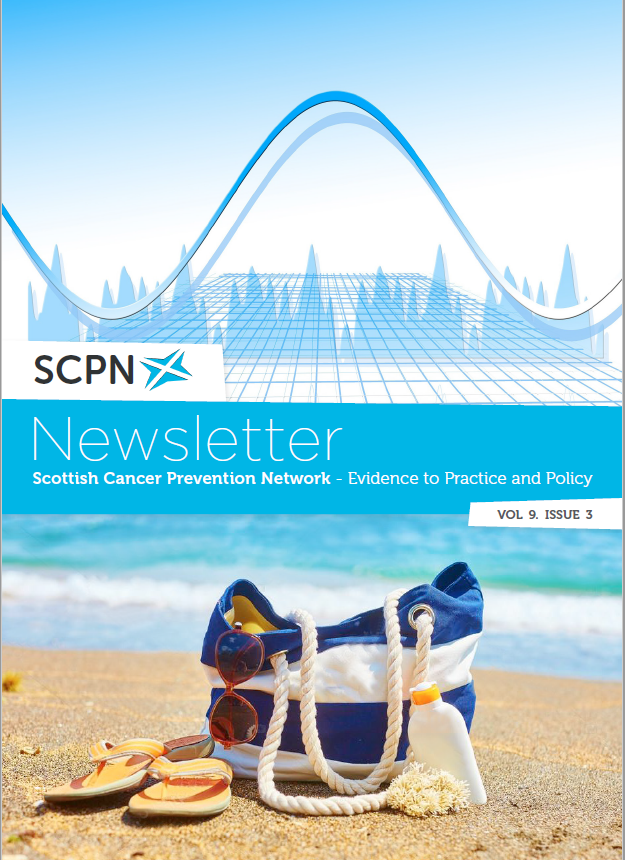
Cancer and lifestyle – research round up
10 Jul 18 |
Prevalence of beliefs about actual and mythical causes of cancer and their association with socio-demographic and health-related characteristics: Findings from a cross-sectional survey in England.
Shahab L et al. Eur J Cancer. (2018) doi: 10.1016/j.ejca.2018.03.029 https://thescpn.org/2K0IfAI
The body of evidence that around one third of cancers are preventable is unequivocal and cancer prevention guidelines have been published for many years now however studies suggest that the awareness of the general public and in particular those from more deprived
backgrounds of the link between cancer risk and lifestyle choices is low. This study extracted data from the Attitudes and Beliefs about Cancer-UK Survey, a large population-based crosssectional omnibus survey in England carried out between January and March 2016. The Cancer Awareness Measure (CAM), a validated tool of known cancer risk factors, was used and the authors developed the CAM—Mythical Causes Scale (CAM-MYCS) to accurately identify the range of beliefs people hold about mythical cancer causes. A total of 1990 adults took part in the survey all of whom completed the CAM and a randomly selected subsample of 1348 adults was also asked to complete the CAM-MYCS. A significantly higher proportion of CAM (53%; 95% confidence interval [CI] 51–53) were correctly identified than CAM-MYCS
(36%; 95% CI 34–37) items (t[1329] = 15; P < 0.01). Fewer than half of items were correctly classified as either cancer causing or not cancer causing (44%; 95% CI 43–45). Smoking and passive smoking were the most identifiable causes of cancer however only 305 of participant correctly identified HPV infection or low fruit and vegetable intakes. The most commonly identified mythical cause of cancer were stress
(43%; 95% CI 40–45), food additives (42%; 95% CI 39–44), exposure to non-ionizing electromagnetic frequencies (35%; 95% CI 33–38) and eating genetically modified food (34%; 95% CI 31–36).
Conclusion: Awareness of actual and mythical risk factors for cancer was low and this has implications for the adoption of healthier lifestyles to reduce the risk of cancer.
Dietary Patterns and Breast Cancer Risk: A Systematic Review
Dandamudi A et al. Anticancer Res. (2018) doi: 10.21873/anticanres.12586 https://thescpn.org/2MIgD0F
The relationship between what we eat and breast cancer risk has been long established but more recent evidence and guidelines are more cognisant of dietary patterns rather than the intake of individual foods. The American Cancer Society recommends eating a healthy diet with an emphasis on plant foods to reduce a person’s lifetime risk of developing cancer. This systematic review of 17 original research studies,
published 2013-17, characterized diets using prospective and retrospective approaches to examine associations between dietary patterns and breast cancer risk. A novel scoring matrix was used to grade retrospective dietary pattern alignment with the American Cancer Society dietary guidelines. The authors identified 15 healthy and 10 unhealthy dietary patterns determined retrospectively, and 7 dietary indices
determined a priori. Patterns which were protective for breast cancer were found to be high in vegetables and those which were associated with increased breast cancer risk consistently contained saturated fat and red and processed meats.
Conclusion: Findings suggest that dietary patterns that include vegetables and limit saturated fat and red and processed meats may lower breast cancer risk.
